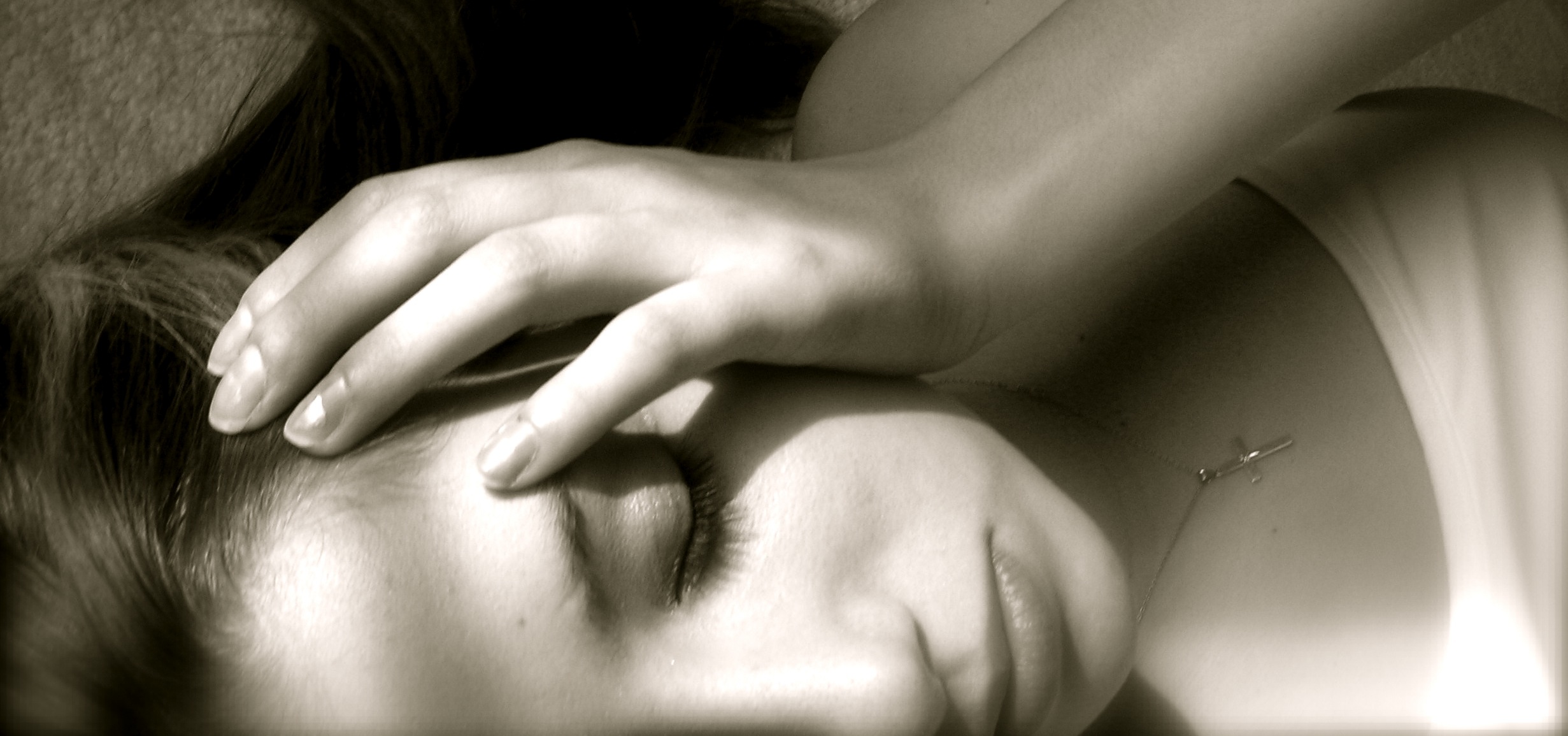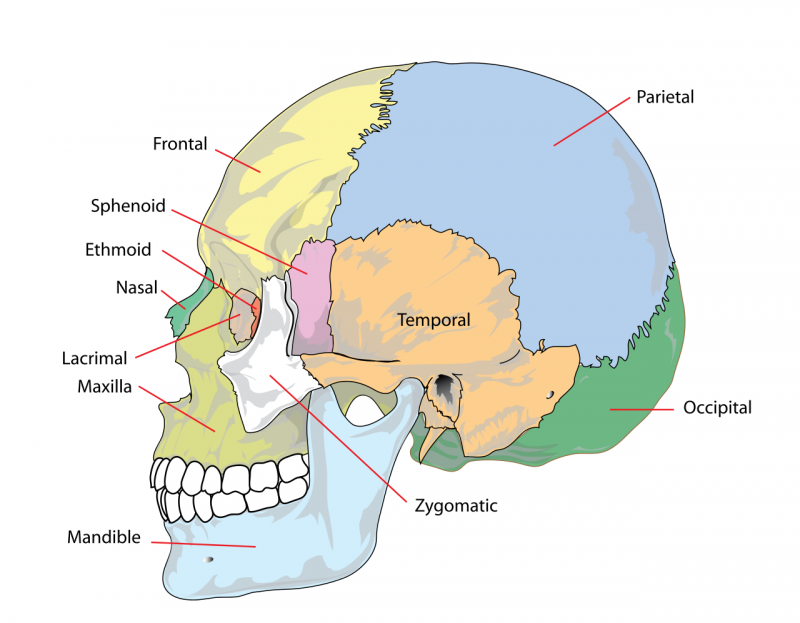November 24, 2015
Chiropractic Craniopathy
Craniopathy, separately discovered by Chiropractor Nephi Cottam and Osteopath William Garner Sutherland, is a specialty within both the chiropractic and osteopathic professions.
The skull, as the above picture illustrates, is made up of many bones connected by joints. This allows some movement to occur at each joint. The skull responds to the pulsing of blood pressure and nerve cells with a slight expansion and contraction just large enough to be felt by trained hands. This pulsing also pumps the master glands of the hormone system that sit in the fulcrum of movement of the skull behind the eyes. When the bones don’t respond to these motions, migraine headaches, cluster headaches, hormonal problems, and subtle brain dysfunction ensues. Craniopaths move the bones of the skull and restore normal motion.
Distortions of the cranial vault (the part of the skull that covers the brain) are thought to play a role in developing scoliosis, Parkinson’s disease, autism, ADHD, and ADD. Distortions in the alignment and movement of facial bones and temporal bones can cause jaw joint problems, dizziness, vertigo, facial pain, and Bell’s Palsy. Less than 10% of either profession is trained in this art as it takes years to master.
I was very lucky to learn craniopathy from from nationally recognized experts Virginia Handly, D.C, Marc PIck, D.C.,and Major DeJarnette, D.C. while still an intern. I performed my first chiropractic miracle using Craniopathy to enable a child, who could not sit up unsupported due to Cerebral Palsy, to walk while I was still an intern in chiropractic college. The Craniopathic treatment also enabled her to breathe through her nose.
Because I treat migraines with Craniopathy, I’ve only had 3 in over a few hundred 200 hundred headache patients that I have not completely cured. Upon demonstrating craniopathic treatment of sinusitis in China, I was offered a professorship in a Chinese Medical School.


3 Comments
My brother is suffering from cluster headaches can you tell me if craniopathy will help him at all. He cant cope much longer . Thank you
Jan,
Usually yes. In my career, I've only not succeeded with one cluster headache patient. That was over three decades ago before I had become an acupuncturist. Occasionally, cluster headaches are better treated with acupuncture than craniopathy or spinal manipulation because the cause in such cases is not due to a cranial rhythm or TMJ problem and not due to pressure on or irritation of the greater or lesser occipital nerves which come from the upper spine.
Janette:
Yes, the likelihood of my curing him of his headaches is high. I've only had three headache patients I have not cured in my 35 year career. One was a cluster headache patient whose headaches I improved by causing the pain to be not as intense and the headaches to be less frequent with just craniopathy. The second was a woman whose father had lead with his left, when she was a child, resulting in permanent deformation of her skull. Yet, I lessened the severity of her headaches as well with just craniopathy. These were in my first year of practice. The third was a priest with migraines I was unable to cure or help much. Everyone else has had complete elimination of headaches under my care. This represents a complete cure rate of well over 97% in that I've treated at least 600 people with headaches over my career. This includes patients with migraines (most frequent diagnosis), tension headaches, headaches as symptoms of other systemic conditions such as high blood pressure, headaches as symptoms of various toxic conditions ("toxic headaches" such as drug reactions, food reactions, digestive issues), headaches due to temporal mandibular joint disorders and teeth not fitting together well, cluster headaches, post surgical headaches, and headaches due to brain tumors or skull trauma (post-concussion headaches). Most cluster headaches are actually migraines, which are almost always caused by interruption of the cranial rhythm. Most migraines and cluster headaches not caused by distortions of the cranial bone movement are caused by food allergies or drug interactions (usually from drugs prescribed by physicians), or by build up of toxins due to various slow bowel transit diseases. In situations of slow bowel transit caused toxins, the fecal matter is in the digestive tract so long that indole compounds are absorbed into the blood stream from bacterial decomposition of the stool faster than the body can excrete or metabolize them. The indole compounds are neurotoxic, causing headaches. Everyone absorbs indoles from their gut, but normally fart and exhale them out at a rate fast enough to prevent any toxic reaction in their own body. When the production is higher than the excretion rate, headaches result. These headaches can mimic cluster headaches because they usually come and go as diet and activity change transit time in the gut. Since cluster headaches come and go in clusters like these headaches, this is the single most common non-cranial rhythm distortion cause of cluster headaches.
If your brother decides to seek my care, I'll start with chiropractic and craniopathy for your brother. If that does not succeed, we'll look into the other possible cause of his headaches such as food allergies, gut dysbiosis, gut transit time, etc. Between the craniopathy, the nutritional causes and also acupuncture, the chances of your brother having a cluster headache, or any other headache not due to a brain tumor I cannot cure is miniscule. The last headache patient who did not have a brain tumor or Arnold Chiari malformation ( a birth defect effecting how fluid circulates around the brain) I did not cure was the priest I treated back in the 1990's.
If your brother is unable to have my care, I suggest you find a craniopath nearby who can treat him. Craniopathy cures most cluster headaches. Also, it would not hurt for him to see an optometrist to make sure he does not have too much eye strain. Sometimes eye strain can set off cluster headaches and migraines, or make them worse.
Current medical thought in the US is that cluster headaches are a form of petite mal epilepsy, so they prescribe gabopentin (Neurontin). This is barking up the wrong tree. If gabopentin does help at all, it is because gabopentin also reduces neural activity. Since pain is a neural activity, gabopentin reduces the intensity of cluster headaches and their frequency. This is a treatment of symptoms only approach and has nothing to do with treating the cause of the headaches.
Leave A Comment